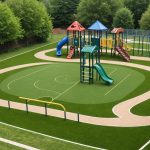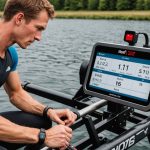Understanding Aqua Endurance
Aqua endurance is a crucial component of synchronized swimming, influencing performance significantly. Unlike traditional swimming, synchronized swimming demands both stamina and precision. Key factors affecting endurance in water include buoyancy and resistance, which impact how athletes sustain energy during routines.
Factors Influencing Aqua Endurance
- Water Temperature: Cooler temperatures can drain energy quickly, requiring swimmers to adapt their endurance strategies.
- Hydrodynamics: Understanding the flow and movement through water can enhance efficiency and conserve energy.
- Mental Focus: Mental stamina is essential to maintain concentration and sync with the team throughout complex routines.
Enhancing Aqua Endurance through Training
Training methods are pivotal for building endurance. Effective techniques include:
In the same genre : Unlock Your Rowing Potential: Harnessing Heart Rate Monitoring for Superior Training
- Cardiovascular fitness: Aerobic exercises such as swimming laps at variable speeds can build stamina over time.
- Resistance training: Using water weights and bands can increase muscle strength, aiding in prolonged performance.
- Technical drills: Focus on refining precise movements, which conserves energy and enhances synchrony during performances.
By adapting these scientifically backed methods, synchronized swimmers can significantly boost their endurance and overall performance in competitive environments.
Targeted Exercises for Endurance Building
Enhancing aqua endurance is essential for synchronized swimmers to excel in their performances. By integrating both dryland and in-water exercises, athletes can significantly improve their endurance levels.
Have you seen this : Unlock Your Rowing Potential: Harnessing Heart Rate Monitoring for Superior Training
Dryland Training Techniques
Dryland training is crucial for building strength that translates into the water. Strength training particularly targets muscles used in swimming, fostering core stability and overall power. Key exercises include planks for core strength and resistance bands for upper body enhancement. Flexibility routines, like yoga or dynamic stretching, also contribute to better mobility and prevent injuries, supporting long-lasting performance.
In-Water Drills
In-water drills focus on increasing aerobic capacity and stamina. Interval training, which includes short bursts of intense swimming followed by rest, enhances endurance effectively. Implementing resistance training, using equipment like aqua belts or paddles, builds muscle during aquatic workouts, improving performance in routines.
Advanced Endurance Techniques
For advanced endurance, hypoxic training, which involves breath control exercises, is highly beneficial. It amplifies lung capacity and breath management, critical in synchronized swimming. Incorporating tempo training—adjusting pace during water workouts—improves stamina and rhythmic ability. Cross-training with activities such as cycling or Pilates can also diversify endurance development, providing comprehensive fitness advantages.
Nutrition Strategies for Enhanced Performance
In synchronized swimming, the right nutrition for athletes is essential for optimizing performance. A balanced performance diet supports the intense physical demands of aqua endurance training. Proper nutrition supplies the energy needed for prolonged routines and aids in recovery.
Role of Nutrition in Endurance Training
Nutrition acts as fuel. For synchronized swimmers, carbohydrates are vital as they provide quick energy. Proteins support muscle repair, while healthy fats sustain energy levels. Consuming correct nutrient balance enhances stamina, allowing athletes to perform at their best.
Key Nutrients for Optimal Performance
Focus on whole foods rich in vitamins and minerals. Antioxidants from fruits and vegetables combat oxidative stress from extensive water workouts. Magnesium and potassium are crucial for muscle function, preventing cramps during aquatic activities. Omega-3 fatty acids, found in fish, help reduce inflammation and enhance recovery.
Importance of Hydration
Hydration is fundamental in endurance sports. Swimmers should maintain fluid balance by drinking water before, during, and after workouts. Incorporating electrolytes helps maintain electrolyte balance, crucial in avoiding dehydration and ensuring sustained performance. Proper hydration supports body temperature regulation and protects against fatigue, enabling synchronized swimmers to excel in their demanding routines.
Recovery Techniques for Optimal Performance
Recovery is essential to maintaining peak performance in endurance sports such as synchronized swimming. Implementing effective recovery strategies can significantly impact muscle repair and overall endurance.
Importance of Active Recovery
Active recovery plays a vital role in endurance sports by promoting better circulation and reducing muscle soreness. Engaging in light activities, such as swimming at a slow pace or practicing yoga, can enhance recovery without affecting regular training. Stretching and mobility work post-workout aid flexibility and help prevent injuries. Low-intensity workouts on rest days can further enhance recovery, maintaining fitness while allowing muscles to recuperate.
Nutrition and Recovery
The timing of nutrient intake is crucial for recovery. Consuming protein-rich foods and carbohydrates shortly after a workout supports muscle repair and replenishes glycogen stores. Foods like lean meats, dairy, and whole grains, as well as supplements like branched-chain amino acids (BCAAs), can reduce soreness and improve recovery. These nutritional strategies foster endurance recovery and enhance overall training effectiveness.
Mental Endurance Strategies
Building mental resilience is essential in synchronized swimming. Techniques such as visualization and mindfulness can improve focus and composure. Visualising successful routines and setting clear, achievable goals helps maintain motivation throughout training, contributing to sustained endurance and performance excellence.
Expert Insights and Performance Metrics
When it comes to boosting aqua endurance, expert advice is invaluable. Coaches often stress the importance of customized training programs tailored to each athlete’s needs. They emphasize a combination of endurance exercises, mental resilience, and precise performance metrics to gauge progress in synchronized swimming.
Coaches’ Recommendations
Practiced coaches suggest integrating varied endurance exercises, highlighting the importance of individualised stamina-building aquatic workouts. They advise concentrating on techniques that combine strength and flexibility, enabling swimmers to achieve optimal performance.
Key Performance Indicators
Tracking key performance metrics is crucial for effective training. Coaches recommend monitoring heart rate, stroke efficiency, and lap times to ensure that athletes are making progress in building and maintaining endurance. These indicators help refine training routines to better align with the athlete’s goals and abilities.
Analyzing Successful Training Regimens
By analysing regimens of top synchronized swimmers, coaches can extract strategies and methods that effectively enhance endurance. Emulating such training strategies through aquatic workouts and drills enables swimmers to push their limits while ensuring consistent improvement.
Focusing on expert insights and precise metrics ensures synchronized swimmers are well-equipped to boost their endurance, yielding successful competition outcomes.





